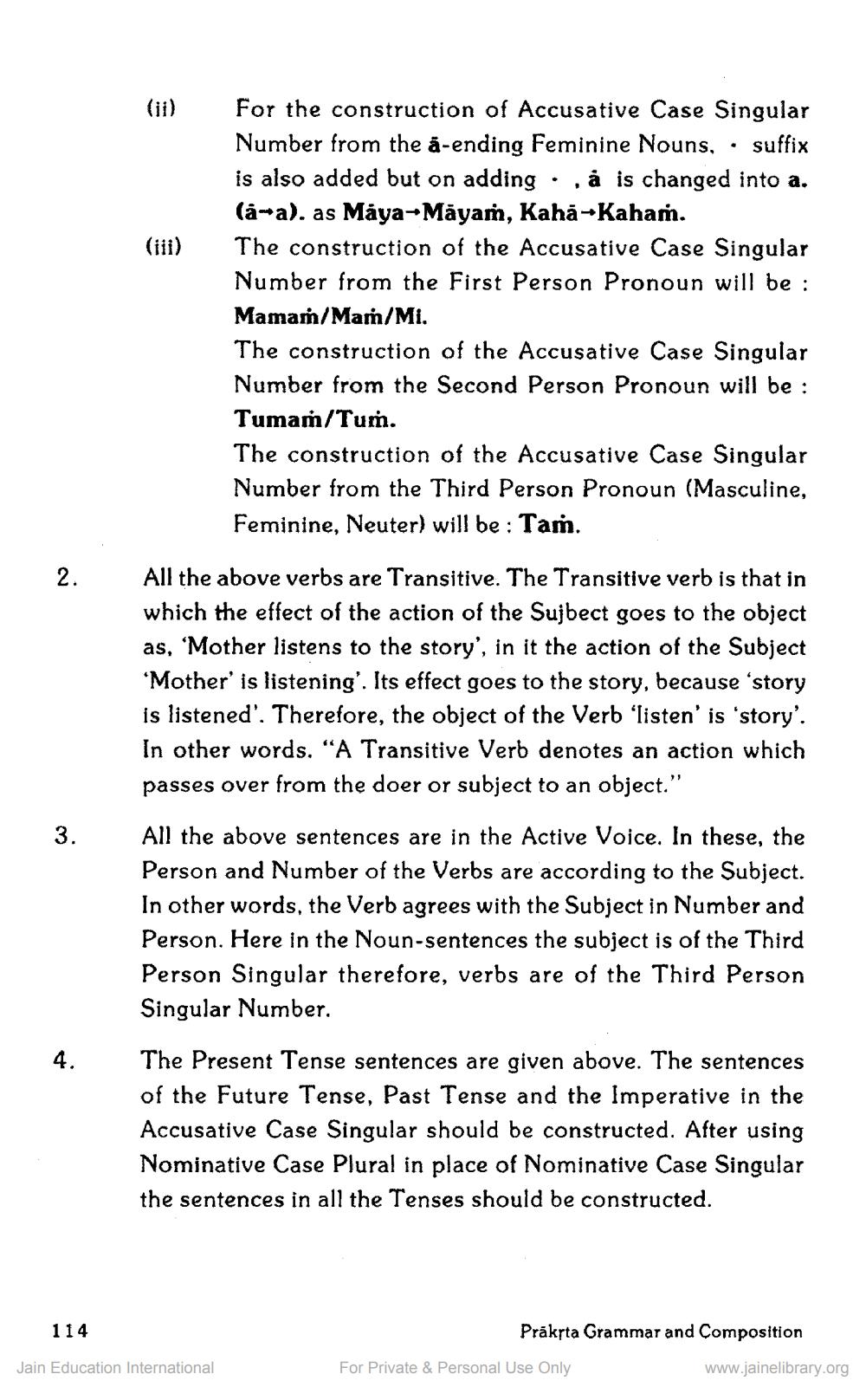________________
For the construction of Accusative Case Singular Number from the a-ending Feminine Nouns, • suffix is also added but on adding . , å is changed into a. (å-a). as Maya-Māyam, Kaha-Kaham. The construction of the Accusative Case Singular Number from the First Person Pronoun will be : Mamam/Maṁ/Mi. The construction of the Accusative Case Singular Number from the Second Person Pronoun will be : Tumaṁ/Tum. The construction of the Accusative Case Singular Number from the Third Person Pronoun (Masculine, Feminine, Neuter) will be : Tam.
2.
All the above verbs are Transitive. The Transitive verb is that in which the effect of the action of the Sujbect goes to the object as, Mother listens to the story', in it the action of the Subject *Mother' is listening'. Its effect goes to the story, because 'story is listened'. Therefore, the object of the Verb 'listen' is 'story'. In other words. "A Transitive Verb denotes an action which passes over from the doer or subject to an object."
All the above sentences are in the Active Voice. In these, the Person and Number of the Verbs are according to the Subject. In other words, the Verb agrees with the Subject in Number and Person. Here in the Noun-sentences the subject is of the Third Person Singular therefore, verbs are of the Third Person Singular Number.
The Present Tense sentences are given above. The sentences of the Future Tense, Past Tense and the Imperative in the Accusative Case Singular should be constructed. After using Nominative Case Plural in place of Nominative Case Singular the sentences in all the Tenses should be constructed.
114
Prāksta Grammar and Composition
Jain Education International
For Private & Personal Use Only
www.jainelibrary.org




